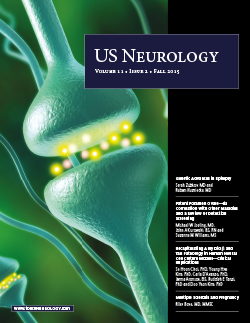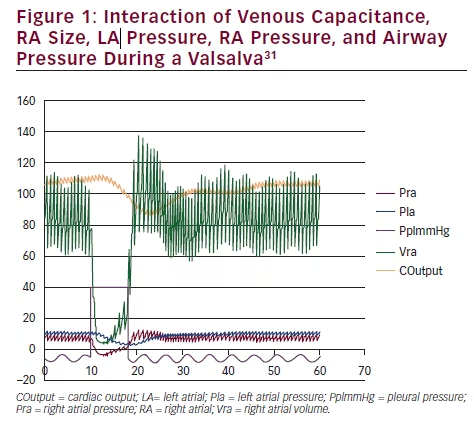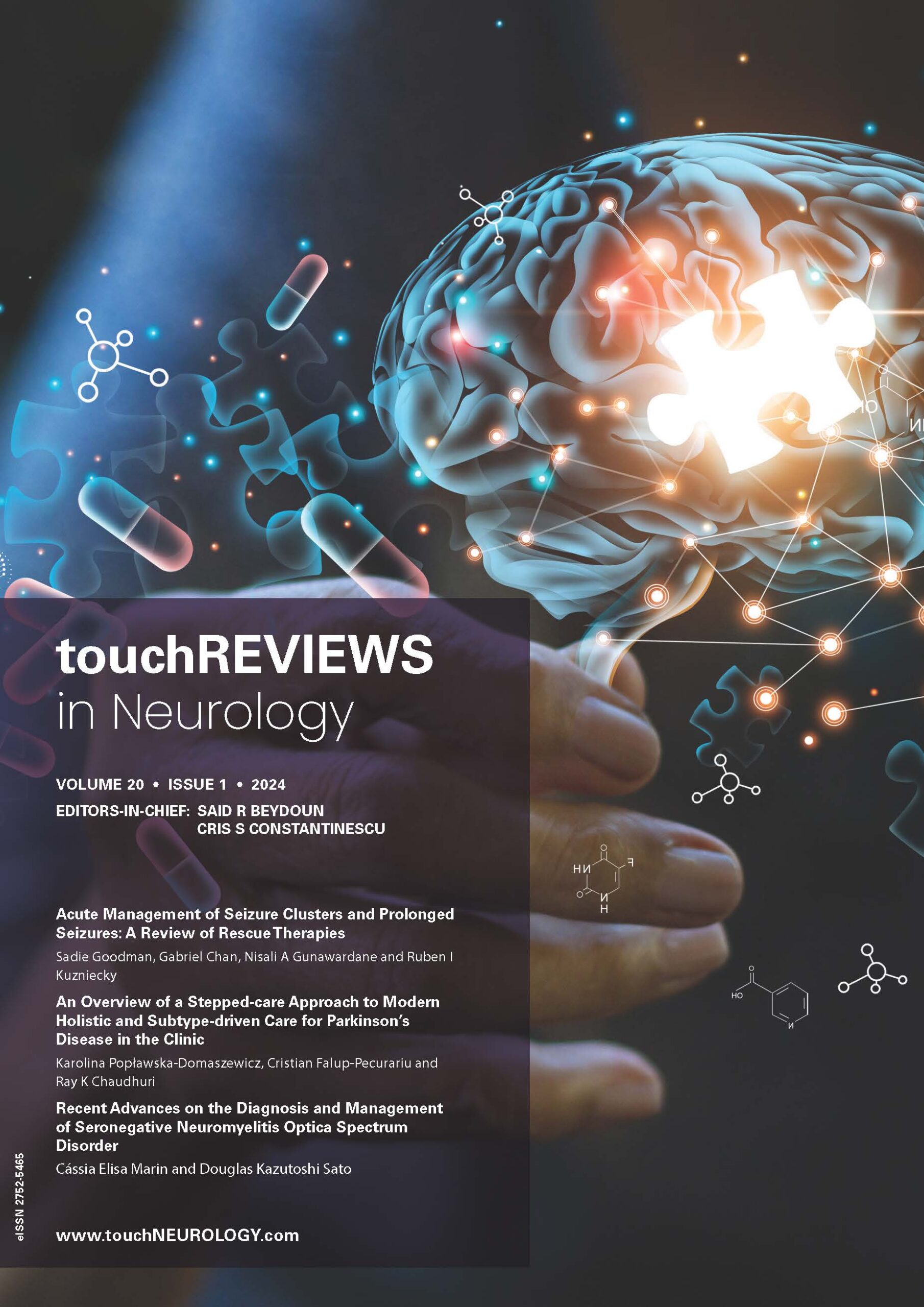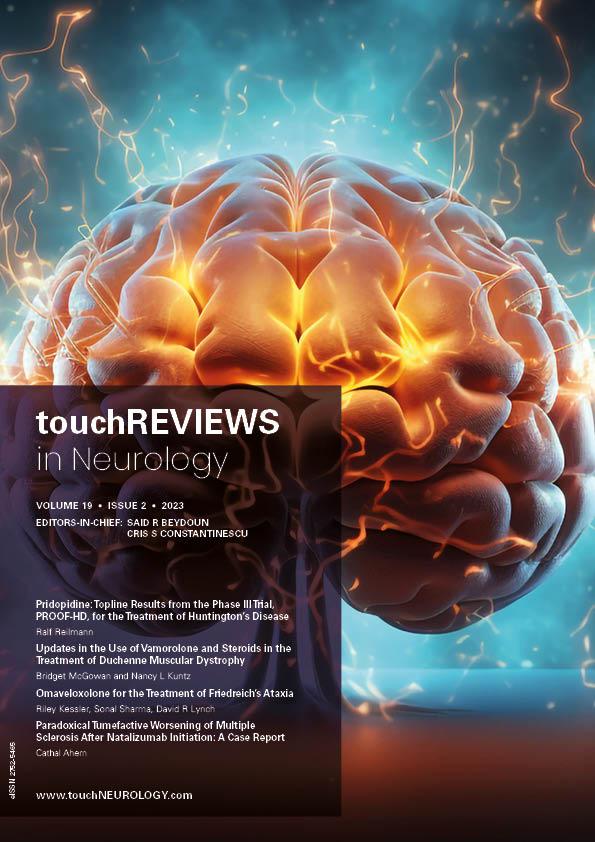US NEUROLOGY – VOLUME 11 ISSUE 2 – FALL 2015
A very warm welcome to the fall edition of US Neurology. The issue is nicely presented by Francois Bethoux, an esteemed member of our Editorial Board. In this edition, we explore a wide range of topical reviews in the field of neurology. Jopling et al. focus on the diagnostic methods for patent foramen ovale, and also on its associated conditions. You will also find an editorial from Shor on the recent developments in pediatric neurology.
Making up the rest of this edition, we feature articles on multiple sclerosis, amyotrophic lateral sclerosis, epilepsy, Alzheimer’s disease, neurocognitive complications associated with cancer therapies, and Lyme disease of the nervous system.
We would like to thank all our contributors and reviewers. We hope you enjoy this edition and find the articles informative and relevant to your practice and interests.
Welcome to the latest edition of US Neurology, which features articles covering a wide range of topics relevant to the practice of neurology, and to the wider biomedical community. This issue begins with articles on two progressive diseases of the central nervous system causing motor and cognitive disability: multiple sclerosis (MS) and Parkinson’s disease (PD). […]
Multiple Sclerosis
Achieving wellness is a high priority for people living with multiple sclerosis (MS). They want to know what they can do today to feel their best, and whether lifestyle interventions can impact the course of the disease. People with MS are also among the most informed, engaged, and self-advocating patients with chronic illness—proactively seeking information […]
The importance of pregnancy management in multiple sclerosis (MS) is underscored by the fact that MS affects three times more women than men, with first symptoms typically during the peak reproductive years. Childbearing—An Achievable Goal for Many Women with Multiple Sclerosis While providers were cautious in prior decades, it is increasingly clear that most women […]
Patent Foramen Ovale
Patent foramen ovale (PFO) is an opening or flap in the atrial septum that exists as a normal and vital component of intrauterine life. PFO allows for the transportation of rich oxygenated blood to bypass the lungs and flow from the right to the left atrium during fetal development. Shortly after birth, a reduction in […]
Epilepsy
Significant advances in understanding the genetic mechanisms behind epilepsy have been made in the past 20 years, especially in the case of epileptic encephalopathies. Though approximately 20–30 % of epilepsies can be attributed to an obvious acquired etiology, such as stroke or traumatic brain injury,1,2 genetic factors are estimated to underlie 40–70 % of all […]
Nervous System Infections
Both “nervous system Lyme disease” and “chronic Lyme disease” are labels that are used in quite different ways, leading to controversy, frustration, distrust, and worse. Most neurologists use the first to describe patients with unambiguous nervous system infection with Borrelia burgdorferi, the tickborne spirochete responsible for Lyme disease. Most infectious-disease and other specialists, if they […]
Alzheimer’s Disease
Recapitulating Amyloid β and Tau Pathology in Human Neural Cell Culture Models—Clinical Implications
Alzheimer’s disease (AD) is the most common neurodegenerative disease, clinically characterized by progressive memory loss. To date, an estimated 5.2 million people have the disease in the US, and the total number of people with AD-related dementia is projected to rise to 13.8 million by 2050.1,2 At present, there is no cure for the disease, […]
Pediatric Neurology
It is no small task to choose from among the many accomplishments and advances in child neurology that epitomize the year’s achievements. Making choices means making inclusions and omissions others would not have made. Choices notwithstanding, the small sampling presented at the 2015 American Academy of Neurology meeting in Washington, DC, US, serves to reflect […]
Amyotrophic Lateral Sclerosis
Amyotrophic lateral sclerosis (ALS) is a neurodegenerative condition that is frequently described as being either familial or sporadic. Since the discovery of mutations in SOD1 as a cause of ALS, there has been an explosion in genetics research, leading to the discovery of at least 22 genes of major effect, of which C9orf72, SOD1, TDP43 […]
European Neurological Review Highlights
Acute inflammatory demyelinating polyneuropathy (AIDP) is an acute monophasic polyradiculoneuritis whose incidence ranges from 0.89 to 1.89 cases (median, 1.11) per 100,000 person-years in Western countries.1,2 Chronic inflammatory demyelinating polyneuropathy (CIDP) is a common, albeit underdiagnosed and potentially treatable, disease having an estimated prevalence of 1.2–2.3 per 100,000.3 Although CIDP symptoms do not usually reach […]
Restless legs syndrome (RLS), or Willis–Ekbom disease (WED), is a sensorimotor disorder having well-known standardised diagnostic criteria1 that have been revised recently by the International Restless Legs Syndrome Study Group.2 The genetic basis of RLS has not been definitively established,3 but the most important biochemical findings are dopaminergic dysfunction and iron deficiency.4 The interest for […]
William Gower’s statement that seizures beget seizures1 is often quoted as a first recognition of seizure-dependent progressive character of epilepsies. It is worth saying that this assumption has by no means a general value as it does not apply to many types of epilepsies, namely to the idiopathic ones. A progressive course towards drug refractoriness […]

Trending Topic
Seizures are one of the most frequent neurological disorders in neonates − the incidence of seizures in infants born at term is 1–3 per 1,000 live births, and is even higher in both preterm and very-low-birth-weight infants at 1–13 per 1,000 live births.1 Seizures may signify serious malfunction of, or damage to, the immature brain and […]
Journal Archive
touchREVIEWS in Neurology is a peer-reviewed, free-to-access, bi-annual neurology journal comprising review articles, case reports, practice guides, theoretical discussions, and original research. It features balanced and comprehensive articles written by leading authorities, addressing the most important and salient developments in the field of neurology.
Latest articles videos and clinical updates - straight to your inbox
Log into your Touch Account
Earn and track your CME credits on the go, save articles for later, and follow the latest congress coverage.
Register now for FREE Access
Register for free to hear about the latest expert-led education, peer-reviewed articles, conference highlights, and innovative CME activities.
Sign up with an Email
Or use a Social Account.
This Functionality is for
Members Only
Explore the latest in medical education and stay current in your field. Create a free account to track your learning.

















